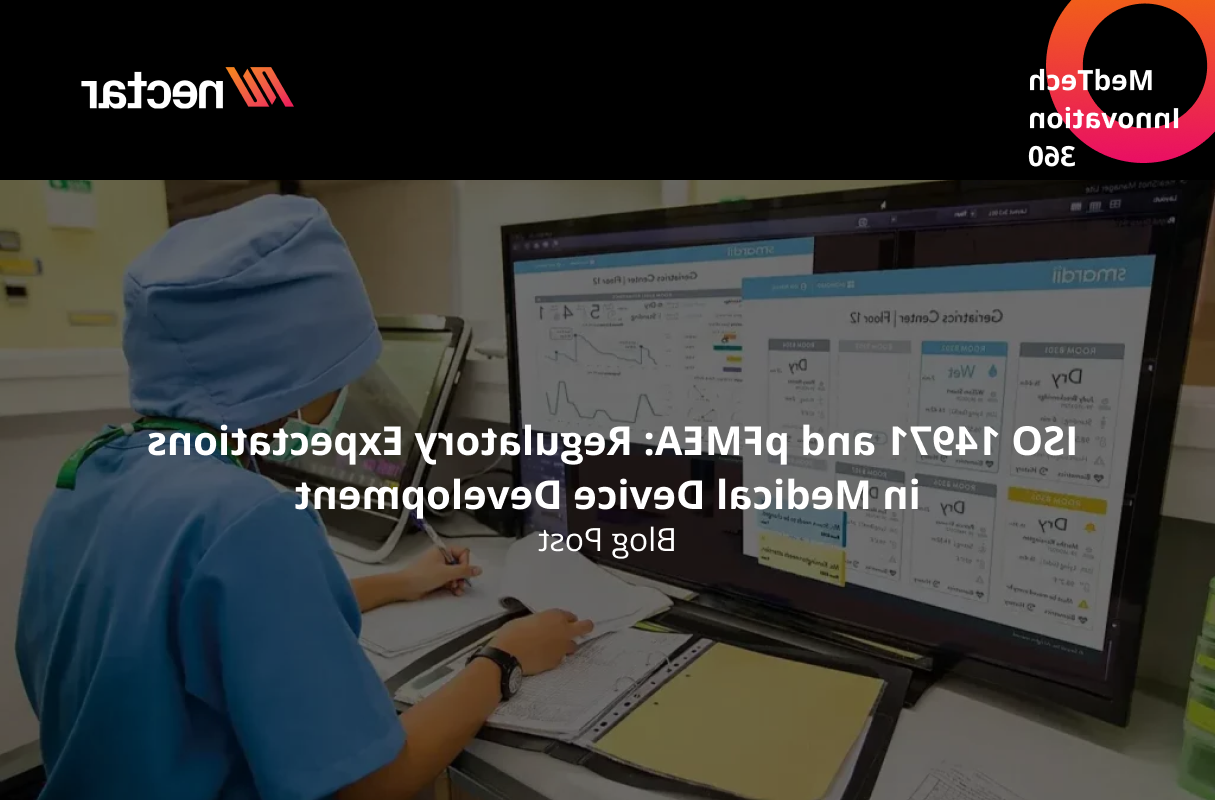Medical devices have always been an intricate blend of science, innovation, and safety regulations.
Our previous blog detailed the principles of the regulatory requirement, going beyond just the FDA approval and delving deeper into critical standards like ISO 14971, the international standard for the application of risk management to medical devices. This, however, is just the tip of the iceberg.
Before diving deep into the design and development process, there are certain factors to consider, ensuring compliance with ISO 14971 and effective pFMEA (Process Failure Mode and Effects Analysis). As experts in the medical device design process, we’ve compiled a list of four top tips you need to keep in mind during the medical device design and development process. As always, Nectar is here to help. If you’d like to simplify the process even more, schedule a consultation – we’ll be here with you every step of the way.
Now, let’s further unravel the layers of this complex process.
1. Engage with Your Users:
Engaging users goes beyond merely targeting the right market segment. When using risk management processes like those in ISO 14971, understanding user feedback, concerns, and potential application scenarios is essential. In the world of medical devices, every user’s voice can illuminate potential risks. This is where pFMEA plays a vital role, aiding designers in anticipating potential process failures.
A classic example of the importance of user engagement comes from our collaboration with Seca. When tasked with creating a standout medical-grade scale for the highly competitive US market, Nectar went beyond traditional design processes. By visiting hospitals and assessing challenges firsthand, we gathered pivotal insights. This deep dive into real-world environments, paired with an assessment of competitors, allowed us to craft a solution that addressed genuine user needs while simultaneously meeting market demands.
2. Think Ahead for Longevity:
It’s not enough for a medical device to be revolutionary; it must also be timeless. Given the lengthy gestation from idea conception to a tangible product, the device’s design needs to outlive fleeting trends. While ISO 14971 gives a framework for risk management, designers need to think ahead, ensuring their products adapt with evolving standards, guidelines, and user preferences. At Nectar, we believe in setting trends rather than following them. Designing with an eye on the future ensures devices remain relevant and continue to cater to the end-user’s needs.
3. Design with Purpose and Compliance:
Innovation is essential, but so is purpose. As you shape your medical device, list the crucial features and discuss them with your design team. Every feature, while enhancing the device’s functionality, should also align with the risk management criteria of ISO 14971. Integrating pFMEA during the design phase ensures that potential process risks are identified and mitigated early on. A well-defined purpose ensures that innovations not only serve to impress but truly enhance user experience and safety.
4. Sustainability and Environmental Considerations:
Our pursuit of medical advancement shouldn’t come at our planet’s expense. Sustainability, while not a direct aspect of ISO 14971, is becoming increasingly vital in product design across all sectors. Small steps like reducing material usage, integrating eco-friendly components, and optimizing the manufacturing process can have a significant impact. Devices designed with environmental considerations are not just marketable but also resonate with the increasing global focus on sustainability.
Navigating Medical Device Development with ISO 14971 and pFMEA in Mind
Medical device design is a dance between innovation, user needs, longevity, safety, and sustainability. With standards like ISO 14971 and tools like pFMEA, designers have a solid foundation to build upon. By incorporating real user feedback, foreseeing future needs, ensuring purposeful design, and advocating sustainability, medical devices can truly be groundbreaking.
At Nectar, we’re not just about following protocols; we’re about setting new benchmarks in medical device design. With expertise spanning decades, we have both the knowledge and the experience to guide innovators through the intricate maze of medical device development. Reach out to us, and let’s collaborate on the next big thing in medical device design.



























